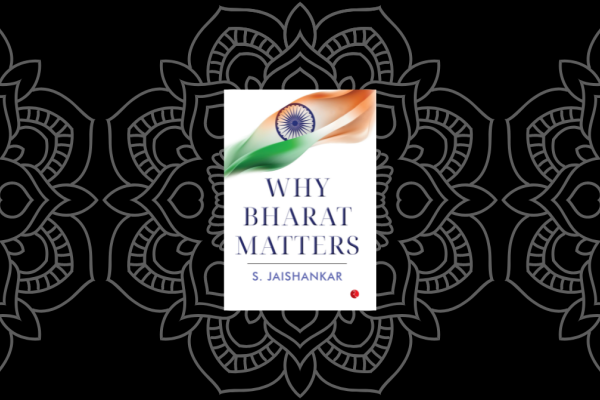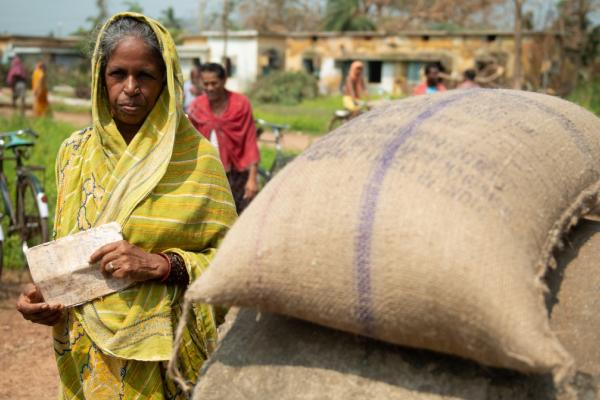Donald Trump’s election in 2016 marked a resurgence of the white nationalist tendencies that have arguably been a part of the United States for a few centuries. 1 White nationalism is at least implicit within the settler colonial project in the Americas. The founding of the United States of America was predicated on appropriating land from indigenous people and the racial oppression of populations deemed non-white. For instance, the US constitution defined rights and citizenship for those categorized as white, counted enslaved people (almost all African) as three-fifths of a person (1776), and later legalized the cultural and physical genocide of Native Americans (1830). See Theodore Allen, Invention of the White Race, Volume 1. (Verso: New York, 1975) Trump’s rhetoric since 2016 has enabled the expression and organization of racist grievances. This has been demonstrated in the rise of hate crimes and expansion of far right groups. Although Trump lost his bid for re-election, it would be a mistake to interpret the 2020 election results as a weakening or rejection of the politics fostered by his presidency. Rather they reflect both the continued popularity of a racist right-wing and the potential power of a multiracial working class politics to counter such right-wing politics.
The US is at a critical juncture. The pandemic worsened recession has led to an alarming spread of hunger, high rates of unemployment, and a looming eviction crisis for an estimated 40 million Americans. The failure to address the economic crisis could further radicalize the right-wing base and also potentially alienate the multiracial working class base that was central to Biden’s win.
Without a working class politics that firmly centres solidarity around racial and economic justice, far-right politicians will succeed in their strategy of stoking white nationalism.
Contrary to mainstream arguments that a pivot back to the political centre is necessary to prevent alienating voters, our analysis highlights the urgency of strengthening the political left. A politics that speaks to intersectional interests of the working class is key to strengthening the political left. Without a working class politics that firmly centres solidarity around racial and economic justice, far-right politicians will succeed in their strategy of stoking white nationalism.
A divided nation, an emboldened right wing
The 2020 election results were neither a clear repudiation of Trump’s politics nor a warm embrace of president-elect Biden. Joe Biden eked out a narrow victory, despite running against an opponent whose mismanagement of a global pandemic led to over 290,000 Americans dead, rising unemployment, and economic distress. Biden’s small margin of victory of 3.9%—compared to Barack Obama’s 7.3% in 2008 or Bill Clinton’s 8.5% in 1996—signifies how a coalition of far-right and right-wing politics has gained popularity in the US.
Exit polls reveal the ideological polarities between Trump and Biden voters, which highlight the contours of right-wing politics in the US. Trump’s voters , unlike Biden’s, were predominantly white evangelical or born-again Christian, and held distinctly different views on the Covid-19 pandemic/economic crisis and racism in the US. Trump voters agreed that rebuilding the economy was more important than containing the virus, while most Biden voters thought the opposite. Trump voters were dominantly represented among exit poll respondents who viewed wearing a mask in public as a personal choice (not a public health responsibility).
Most of the Trump voters checked “crime and safety” (implicit racist stereotyping of Black people and of protests against police brutality) among the important issues that determined their vote. A majority of Biden voters think that racism is one of the more, or even the most, important problems facing the US; Trump voters predominantly say racism is a minor problem, if at all.
While lower income groups appear to have voted relatively more for Biden, complexities around race and economic issues suggest they can be swayed either way.
The politicization of public health measures and anti-Black Lives Matter rhetoric defined far-right mobilizations as well as Trump’s campaign rallies in 2020. Over Trump’s presidency Make America Great Again (MAGA) rallies, particularly those hosted by Trump, created a mainstream avenue for white nationalist visions of America, exhorting concerns over ‘crime and safety, ’ and amplifying anti-mask/anti-lockdown rhetoric to galvanize support for Trump. Donald Trump has legitimized far-right groups with his own dog-whistling; these groups will likely continue to grow as a movement despite his defeat. Significant portions of his base continue to believe the election was fraudulent on the grounds that only “real” Americans' votes should count i.e. only those who support the MAGA rhetoric.
While lower income groups appear to have voted relatively more for Biden, complexities around race and economic issues suggest they can be swayed either way. The dangers of a far-right and right-wing coalition highlight the urgency of strengthening the nascent multiracial-working class coalition that secured Biden’s victory.
The critical role of voters of colour
While Trump did marginally increase his support among Black men and Latinx men since 2016, it is also clear that Latinx and Black voters were pivotal to Biden’s victory in key battleground states: Georgia, Arizona and Pennsylvania.
A closer examination reveals it was the relatively densely populated counties with a higher proportion of people of colour that helped Biden win in these states. In Pennsylvania, Biden won by 1.2% of all votes cast and a 60% lead in Philadelphia, where two-thirds of the population is either Black or Latinx or Asian votes. In Georgia, Biden won the popular vote in Georgia by a mere 12,670 votes and he won Atlanta (a majority Black city) by 704,221 votes. In Arizona too, voters of colour gave Biden his victory.
Our analysis of county-level data from Georgia and Arizona illustrates a striking relationship between Biden’s margin of victory and proportions of white/non-white voters.
Arranging the 30 most populous counties of Georgia by the share of non-Latinx whites in the population against the margin of Biden’s victory shows that the higher the share of non-white voters, the higher the margin of Biden’s victory (see Figure 1). In contrast, the greater the white majority in a county, the higher the margin of Biden’s defeat. This result is all the more stark when considering the nine counties that make up Atlanta (purple dots in Figure 1). Clayton and Dekalb whose populations are 70 and 90% Black, respectively, had the highest margins of victory for Biden (67 - 70% points over Trump). Cherokee, in contrast, which is almost 80% white, went for Trump (40 percentage points over Biden).

In Arizona, where Native Americans voted in much larger numbers than in previous elections, Biden’s win was shaped by the Native American and Latinx vote. Figures 2 and 3 show that Biden had his largest margins of victory in counties (Apache, Coconino, and Santa Cruz counties) with a higher share of Native American and Latinx in the population, respectively. Other analyses that disaggregate the county vote further by voting precincts in Yuma, Maricopa and Pima demonstrate that the higher the concentration of Latinx citizens in the precinct, the higher the vote shares for Biden. We find the Latinx vote delivered victory to Biden in some counties (Santa Cruz, Maricopa and Pima) with higher population shares of Latinx people. Maricopa itself was crucial for Biden’s victory in Arizona as the 2.2% margin still gave him 45,000 votes (state-wide his margin was 10,000 votes). However, the Latinx vote also seems divided in other counties such as Greenlee, Graham and La Paz, perhaps due to class and racialized-ethnic differences. This division of the Latinx vote is also reflected nationally. For instance, between three-fifths to three-fourths of voters of Mexican, Puerto Rican and Central/South American descent voted for Biden, whereas 52% of Cuban Americans, who are more likely to identify as white, voted for Trump. Such cleavages among voters of colour underscore that class and racial identity are not monolithic.


Multiracial working class politics
Mainstream narratives suggest that Trump’s base is solidly working class, but exit poll data show that lower-income and more precarious workers seem to have voted for Biden over Trump. Fifty seven per cent of voters without full-time work for pay voted for Biden. In terms of income, 55% of all voters who earned $50,000 or below voted for Biden.
Quite strikingly, even in Texas and Florida where Biden lost, exit polls indicate that working class votes went more to Biden. In Texas and Georgia, 59% and 56%, respectively, of voters who made less than $50,000 annually said they voted for Biden. Moreover, at the national level a majority of those who report the pandemic causing severe (69%) or moderate financial hardship (59%) voted for Biden. In contrast, the majority of those who have suffered no hardship voted for Trump.
Voters of colour are disproportionately represented in the American working class, and therefore, economic justice is not possible without addressing racial justice.
People who voted for Biden are also those who are concerned about both racial and economic justice. For instance, anywhere between three-quarters to four-fifths of those who voted for Biden agreed the following were very important in deciding whom to vote for—reducing racial inequality in the justice system, lowering health care costs, protecting Obamacare and reducing racial universal health coverage respectively. The popularity of certain economic measures may be wider than the Democrats base as indicated by a few points of overlap between Biden and Trump voters who were exit polled—lowering the unemployment rate (66% Biden voters, 71% Trump voters) and lowering health care costs (76% Biden voters, 61% Trump voters). In Florida, where Biden lost, voters also supported the $15 minimum wage, one of the centre-pieces of the progressive policy platform in the US.
Even if most Trump voters express animosity to racial justice issues, working class politics in the US cannot be divorced from racial justice. Voters of colour are disproportionately represented in the American working class, and therefore, economic justice is not possible without addressing racial justice. Policies that benefit the non-white working class are also those that benefit the white working class. For example, universal and affordable health care coverage benefits everyone but especially Black and Latinx people who are disproportionately disadvantaged in the US healthcare system. The significant role that voters of colour played in key battleground states underscores the moral and strategic accountability that political leaders owe these voters in meeting their demands. To not do so risks alienating an essential part of the coalition that came to push Trump out.
The election … demonstrated that Republicans could build a multiracial class politics by exploiting racial cleavages amongst voters of colour and by appealing to voters’ desires for class mobility.
The election results make it clear that building a multiracial working class coalition also necessitates galvanizing the largest voting bloc in the US—the ‘non-voter’—which is more likely to be younger, low-income, non-white, and dissatisfied with both parties. Nationally, close to a sixth of all voters were first-time voters and a majority of these voted for Biden. Progressive Democrats such as Alexandria Ocasio-Cortez and Ilhan Omar won their constituencies by landslide victories (64 and 40% margins, respectively) in part by bringing out ‘non-voters’ to the polls. The Democrat party establishment should take note that it was Progressive Democrats that gained support in national congressional races despite the party as whole doing poorly, losing 12 seats. Every democrat that ran on campaigns of progressive left policies of Medicare for All, and the Green New Deal won their contests.
The history of the US is marked by the continued partitioning of the working class along racial lines. Such divisions have enabled the dismal US record on social protections relative to its wealthy peers. The election has already demonstrated that Republicans could build a multiracial class politics by exploiting racial cleavages amongst voters of colour and by appealing to voters’ desires for class mobility. Research indicates, for example, that when Black men support the Republican party (including Trump), it is largely shaped by the party’s articulation of individualized economic prosperity. If the Republicans are able to build its version of a multiracial working class, following in the footsteps of leaders such as the Brazilian president Jair Bolsonaro, far right politics will likely become an explicit bedrock of the US political landscape.
So far, many of Biden’s cabinet picks do not bode well for a politics that will lift up the working class and inspire the coalition that came out this year to vote Trump out. Alternatively, the grass-roots mobilization of working class voters of colour in Philadelphia, Atlanta and in Arizona demonstrates that building a working class coalition that centres racial justice is needed to counter the strengthening of right wing forces.









